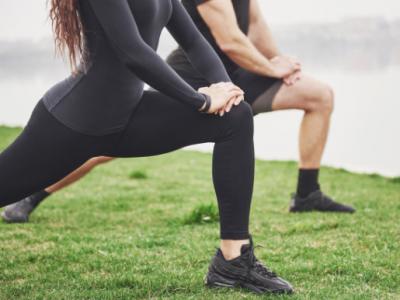
By: Andy
Added: 02 January 2024
Type 2 diabetes is a chronic condition characterised by insulin resistance and elevated blood sugar levels. Lifestyle factors, including diet and physical activity, play a crucial role in managing and potentially reversing this condition.
Multiple studies suggest that regular physical activity can improve insulin sensitivity, lower blood sugar levels, and contribute to better overall diabetes management.
The American Diabetes Association recommends at least 150 minutes of moderate-intensity aerobic exercise per week, along with strength training exercises at least two days a week for individuals with type 2 diabetes.
The Look AHEAD Trial
The Look AHEAD (Action for Health in Diabetes) trial [1], a large clinical study, investigated the impact of intensive lifestyle interventions on type 2 diabetes.
Participants who engaged in a combination of calorie-controlled diets and increased physical activity showed significant improvements in glycemic control and cardiovascular risk factors.
Aerobic Exercise and Diabetes Control
A study published in the National Library of Medicine [2] found that the combination of aerobic and resistance training, as recommended by current ADA guidelines, may be the most effective exercise modality for controlling glucose and lipids in type 2 diabetes.
Resistance Training and Insulin Sensitivity
A study published by The Physiological Society [3] demonstrated that 6 weeks of resistance exercise, consisting of one set to volitional failure of nine exercises taking 15–20 min per session undertaken three times per week, resulted in a 16% improvement in insulin sensitivity in healthy overweight men.
Forms of Exercise and Their Positive Effects
Aerobic Exercise
Aerobic activities, such as jogging, swimming, and cycling, enhance cardiovascular health and improve insulin sensitivity. These exercises help the muscles use glucose more efficiently, reducing blood sugar levels.
Resistance Training
Strength or resistance training builds muscle mass and increases insulin sensitivity. As muscles utilise glucose during and after resistance training, this form of exercise contributes to better blood sugar control.
High-Intensity Interval Training (HIIT)
HIIT involves short bursts of intense exercise followed by periods of rest. Studies suggest that HIIT can improve insulin sensitivity and cardiovascular health more effectively than traditional continuous aerobic exercise.
While it's clear that exercise can play a crucial role in managing type 2 diabetes, the extent to which it can reverse the condition varies among individuals. Case studies, such as those from the Look AHEAD trial, highlight the potential benefits of combining lifestyle interventions, including both diet and exercise, for comprehensive diabetes management.
Different forms of exercise, from aerobic activities to resistance training and HIIT, offer unique benefits in improving insulin sensitivity and overall health. However, it's essential for individuals with type 2 diabetes to consult with healthcare professionals to tailor an exercise plan that suits their specific needs and conditions.
[1] https://www.ncbi.nlm.nih.gov/pmc/articles/PMC2804253/
[2] https://www.ncbi.nlm.nih.gov/pmc/articles/PMC5846677/#
[3] https://physoc.onlinelibrary.wiley.com/doi/full/10.1113/EP087435
More Personal Training News

The Power of Protein: Why your body needs it
What exactly makes protein so essential, and how can you ensure you're getting the healthiest sources?.

Is a periodised training programme only beneficial for athletes
When it comes to achieving optimal fitness and performance, the concept of periodised training has long been a cornerstone in the world of athletics..

Is Exercise a Natural Antidote to Depression
Incorporating physical activity into your routine can contribute to a brighter, more resilient mental state..

Does Static Stretching Before Exercise Decrease Performance
Numerous scientific studies have shown that static stretching before exercise can actually have a negative impact on performance..

The Benefits of Resistance Training for Children
Resistance and weight training have long been associated with building muscle and improving strength in adults. However, there is a growing body of evidence suggesting that these forms of exercise can also be highly beneficial for children and adolescents..

Is Strength Training good for managing the Menopause
Menopause is a significant phase in a woman's life, marked by hormonal changes that can bring various physical and emotional challenges..

Is the Kettlebell the Ultimate Workout Tool
In the realm of fitness, the search for the ultimate workout tool is endless. When it comes to efficiency, versatility, and effectiveness, I think it could be the kettlebell..

Use it or lose it as the old saying goes
As the years go by, it is commonly believed that our bodies inevitably lose muscle mass, bone density decreases, and overall strength declines. However, scientific evidence suggests otherwise..

Don't be a cave man....be active this autumn
The nights getting darker and temperature dropping signal a time for cozy evenings and warm comfort foods. With this change in season also comes a tendency to slow down, exercise less, and indulge in calorie-rich treats..

Hypertension and High Intensity Interval Training
If you’re currently suffering from hypertension or pre-hypertension then perhaps carrying out some form of High Intensity Interval Training (HIIT) might be able to help reduce it..